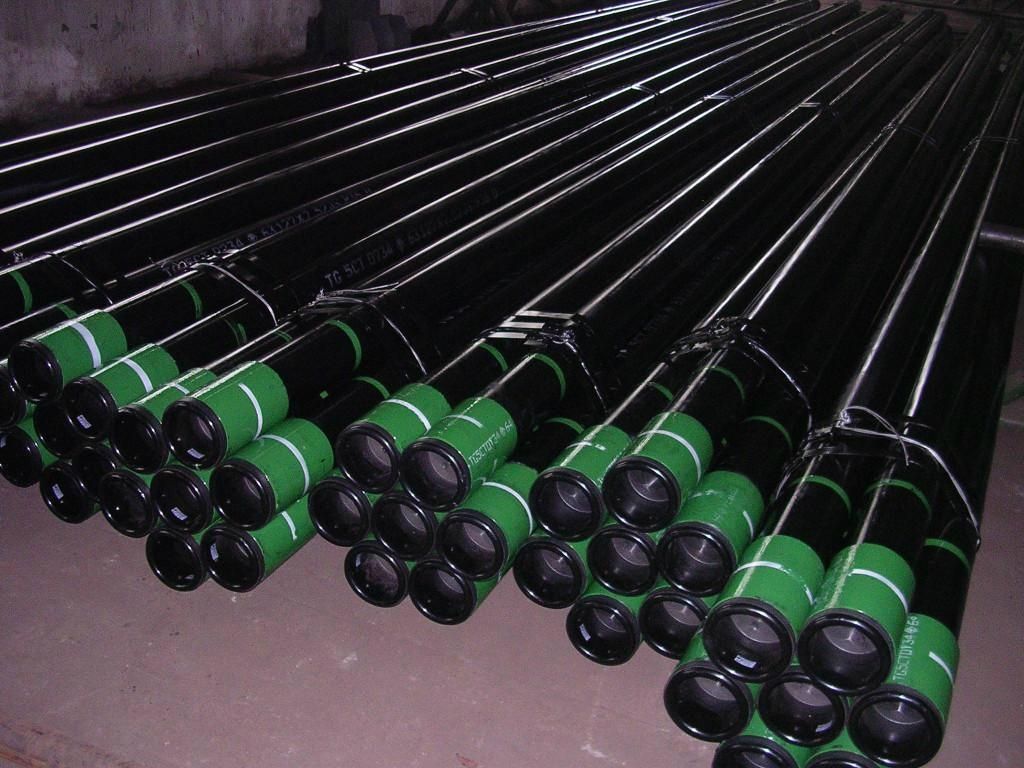RANGE 2 DRILL PIPE
RANGE 2 DRILL PIPE
YOUR HDD DRILL ROD EXPERTS!
At Roschen, drill rod isn't a side business. No garden tractors here. Just high quality HDD drill rod, backed by the industry's most respected and knowledgeable experts. American owned and operated, specializing in 1-piece forged S135 grade drill rod, Roschen is here to make sure you have the right rod for your HDD project. Not sure what you need? Receive some personalized instruction at Drill Rod University. You've never had homework like this before!
Roschen – Servicing all major small to mid-size directional drilling rigs, and not a hay baler in sight!
MANUFACTURING PROCESSES
The three most common Manufacturing methods for Horizontal Directional Drill Pipe are 1-Piece Forged, Inertia Welded, and Press Fit & Welded. Here is an explanation on how pipe is manufactured using each of the methods.
1-Piece Internal & External (IEU) Forged Drill Pipe
An IEU integral forged or 1-Piece forged drill pipe is made up solely from one piece of material. This pipe has the same chemical makeup for the threaded connections and the mid-body tube with no weld zone between them. The raw material, or green tube, is saw cut to an exact calculated length to ensure proper finished length tolerances. The ends of the green tube are then heated to produce a workable material for the forging or upsetting process. The upsetting process forms the steel to create the desired outside diameter, inside diameter and tong length required for the pin and box connection. The next step is to heat-treat the entire tube to a specified grade or hardness. After the tube has been heat treated and straightened, the upset ends are precision machined and threaded. Final inspection is the last and most important step.
Inertia Welded Drill Pipe
An inertia welded drill pipe is similar to the integral drill pipe in that the green tube is saw cut to length; upsets are forged on each end to form a thicker wall dimension, which creates a larger weld surface. With more cross-sectional area, there is more strength to that weld area. The main difference with the inertia welded drill pipe is that it is made from three separate pieces — the mid-body tube and two threaded connections or tool joints. The tool joints are commonly made up from alloy bar stock. After the bar stock has been saw cut to length, drilled and machined, they are heat treated to a specified hardness. After heat-treat, the tool joints go through a final machining, threading and inspection process. The next step is the inertia welding process. This process is a solid state welding technique that actually forges metal together without causing a melt to occur. Because there is no melt product produced during the inertia weld, there is no recast metal or grain enlargement after the weld is completed.
The mid body tube is held stationary by hydraulic clamps and the threaded tool joint is clamped in a collet chuck on a rotatable spindle. Also attached to the spindle is a flywheel of a pre-calculated weight. The weld cycle consists of the spindle being accelerated to a pre-determined speed, which is controlled electronically to shut off the drive system when the set speed is reached. This allows the mass of the rotating tool joint and spindle to be free and spinning by kinetic energy alone. At the precise time, the machine forces the tool joint and tube together causing friction at the weld interface. The pressure is maintained until all of the energy in the rotating spindle has been consumed in the weld, which in turn stops the rotation. This metal-to-metal fusion creates 100 percent weld penetration. The weld zone is then machined, heat-treated and inspected to ensure proper strength and hardness.
Press Fit & Welded
This process is one of the oldest drill pipe manufacturing processes. The process is quite similar to the inertia welded pipe in that the tool joints are made separately from bar stock and the mid body is forged and machined so the tool joints can be pressed in the forged ends of the tube. After they are precisely pressed, they go through a mig welding process. After they are welded, the weld zone is properly heat-treated to ensure precise strength and hardness.
Any of the above manufacturing processes will produce a quality drill pipe. Just like any other product, if you do it right and refrain from any short cuts you will put out a quality product. After choosing a reputable company to purchase your new drill string from, one must be able to maintain it properly to get the most out of his or hers investment.
Roschen offers a complete line of New or Premium Used Range 2 Drill Pipe to fit your needs. Click on the links below for specifications.
2-⅞ IF DS (13.30#)
3-½ IF (14.00#)
4-½ IF (19.50#)
5-½ FH (21.90#)
5-½ FH DS (24.70#)
6-⅝ FH (25.20#)
6-⅝ FH (27.70#)
6-⅝ FH DS (34.00#)
Not sure what you need? Feel free to contact a Roschen sales professional today to find the rod you need and for price and availability!!
Roschen Drill Pipe is made to the industry standard S135 Specification.
Tensile Strength 145,000 PSI (The maximum stress the material will sustain before fracture.)
Yield Strength 135,000 PSI (The stress corresponding to a specified permanent (plastic) deformation – the point at which the material yields and wont spring back)
Elongation 7% EUL (The increase in the gauge length, measured after fracture of the specimen within the gauge length, usually expressed as a percentage of the original gauge length / EUL Extension Under Load)




